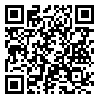
 1, M Mohebali
1, M Mohebali 
 , H Irandoust
, H Irandoust 
 , S.H Hejazi
, S.H Hejazi 
 , H Abdoli
, H Abdoli 
 , L SHirani-Bidabadi
, L SHirani-Bidabadi 
 , F Moaatar
, F Moaatar 
 , S Charehdar
, S Charehdar 
 , N SHareghi
, N SHareghi 
 , A.A Akhavan
, A.A Akhavan 

Background and Aim: Leishmaniasis is a parasitic disease transmitted by sand-flies. Seventeen out of the 30 Iranian provinces are contaminated. Although many therapeutic modalities have been suggested, no definite treatment for this widespread infection is available. Many drugs currently used for cutaneous leishmaniasis have their side effects and create complications-drug resistance, etc. This has prompted researchers to get interested in drugs of a natural origin. The aim of this study was to investigate and compare the efficacies of an extract of propolis and systemic glucantime against cutaneous leishmaniasis in Balb/c mice.
Materials and Methods: Groups of inbred, female Balb/c mice, aged 4-6 weeks, were inoculated with 1.6 × 10 6 viable stationary-phase promastigotes in the base of tail. The mice were provided by Iran Pasteur Institute, Tehran and were randomized into three groups of 9 mice each. Groups 1 to 3 were treated with pure 70% ethanol, systemic glucantime, or the propolis hydroalcoholic extract for a 6-week period the 4th group served as control. The statistical tests including student t-test were used for data analysis.
Results: Overall, 27 mice were studied. We did not observe any statistically significant difference among the groups with regard to the size of the ulcer at the beginning (P>0.01). At the end f the period, there was a significant difference with regard to reduction of ulcer size between the propolis extract and glucantime groups in favor of the propolis extract (P= 0.001). Further analysis of the data showed that the largest reduction in the ulcer size was caused by the propolis extract, as compared with the control, glucantime and alcohol groups.
Conclusion: Our results suggest that the propolis extract is more effective in the treatment of cutaneous leishmaniasis in mice. We suggest that the efficacy of this extract alone or in combination with drugs be assessed against human cutaneous leishmaniasis, using randomized clinical trials.
Received: 2008/04/29 | Accepted: 2009/02/6 | Published: 2013/08/9
| Rights and permissions | |
 |
This work is licensed under a Creative Commons Attribution-NonCommercial 4.0 International License. |
